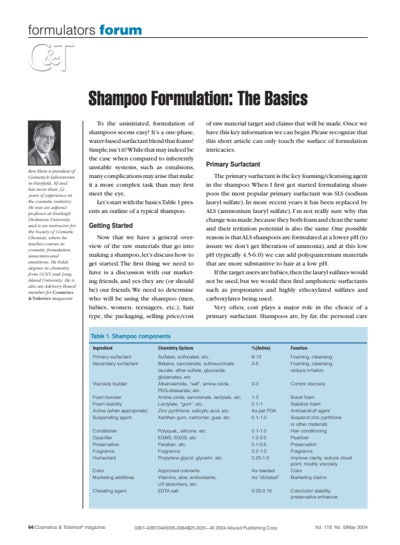To the uninitiated, formulation of shampoos seems easy! It’s a one-phase, water-based surfactant blend that foams! Simple, isn’t it? While that may indeed be the case when compared to inherently unstable systems, such as emulsions, many complications may arise that make it a more complex task than may first meet the eye.
Let’s start with the basics. Table 1 presents an outline of a typical shampoo.
Now that we have a general overview of the raw materials that go into making a shampoo, let’s discuss how to get started. The first thing we need to have is a discussion with our marketing friends, and yes they are (or should be) our friends. We need to determine who will be using the shampoo (men, babies, women, teenagers, etc.), hair type, the packaging, selling price/cost of raw material target and claims that will be made. Once we have this key information we can begin. Please recognize that this short article can only touch the surface of formulation intricacies.
The primary surfactant is the key foaming/cleansing agent in the shampoo. When I first got started formulating shampoos the most popular primary surfactant was SLS (sodium lauryl sulfate). In more recent years it has been replaced by ALS (ammonium lauryl sulfate). I’m not really sure why this change was made, because they both foam and clean the same and their irritation potential is also the same. One possible reason is that ALS shampoos are formulated at a lower pH (to insure we don’t get liberation of ammonia), and at this low pH (typically 4.5-6.0) we can add polyquaternium materials that are more substantive to hair at a low pH.











